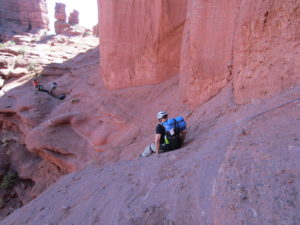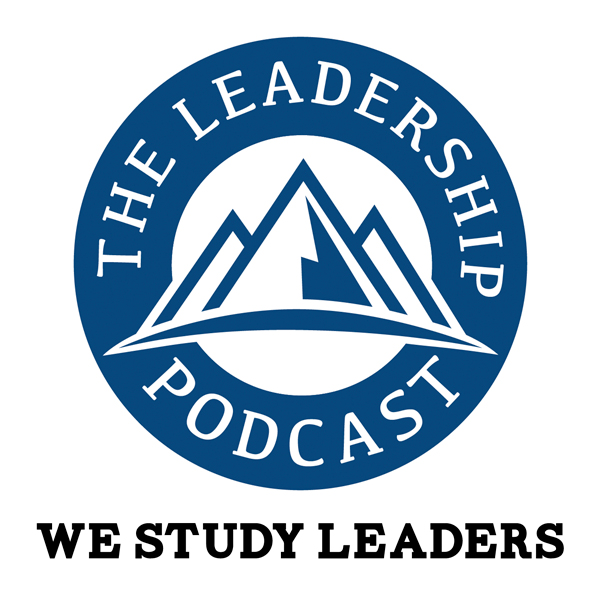I just returned from our fifth Crucible Expedition to Moab where executives and Special Operations soldiers participate in a transformational experience. Though perspectives vary greatly (life & death versus time & money), the challenges of people in teams and leadership roles are rife with similarities.
 For the executives, the environment provides a stark contrast to boardrooms, conference spaces, and traditional business meeting places. For the Special Operators, the field, despite the ever-changing weather dynamic, provides a place of great comfort where one can truly “hear the unheard,” and start to determine the myriad of options before them as they transition to the business world.
For the executives, the environment provides a stark contrast to boardrooms, conference spaces, and traditional business meeting places. For the Special Operators, the field, despite the ever-changing weather dynamic, provides a place of great comfort where one can truly “hear the unheard,” and start to determine the myriad of options before them as they transition to the business world.
For this particular Crucible, we asked the executives and Special Operations soldiers to work together to answer the following questions over the course of four days, and to take the answers back to their organizations/units:
- How does this team define a high performing team?
- How can a team achieve shared accountability?
- How is the team’s performance measured?
The Business Dictionary defines a team this way:
A group of people with a full set of complementary skills required to complete a task, job, or project. Team members (1) operate with a high degree of interdependence, (2) share authority and responsibility for self-management, (3) are accountable for the collective performance, and (4) work toward a common goal and shared rewards(s). A team becomes more than just a collection of people when a strong sense of mutual commitment creates synergy, thus generating performance greater than the sum of the performance of its individual members.
And here is how the team answered those three questions:
How does this team define a high performing team?
A high performing team sets a high standard of sustained excellence through consistent drive and proactive accountability.
How can a team achieve shared accountability?
Set ambitious KPIs that are mutually beneficial and systematically monitored through an open form of communication, including AAR (after action reviews), while recognizing the consequences.
How is this team’s performance measured?
- Achievement of KPI’s
- Identified new opportunities for moving forward.
- The team constantly sets industry standards in comparison to competitors.
- The team is constantly evolving
Note the term “standard” in the first response above. There was a great deal of discussion about how selection should be an on-going process. Just because you met the standard to join a team, doesn’t mean you get to stay on the team without “sustained excellence.”
Also noted above is the need to conduct timely, thorough and candid AAR’s (After-Action Reviews/debriefs) like the military does after every single mission. The AAR’s lead to shared accountability, and a drive for continuous personal and team improvement. It becomes a personal and team responsibility grounded in discipline to create muscle-memory habits.
Identifying new opportunities to adapt and evolve requires a leader not be mired in the execution and operational issues of the team. It’s hard to know how to deploy resources (strategically and tactically) and clear obstacles with a myopic view. This also means that your confidence can’t always come from the competence of knowing every person’s job. You must rely on the strengths and unique perspectives of a diverse team to meet challenges for which the contingency that’s needed isn’t the one that was envisioned.
We talk a lot about what people expect of the leader, but seldom articulate what a team must expect from its own members. Try the TREE acronym to align expectations and drive commitment to shared goals:
T – for Team – the team comes first. We before me. Selflessness is valued about self-interest.
R – for Results. You have to perform and hit your numbers. When you put numbers on the board you earn influence.
E – for Empathy. You need to have empathy for every position/role of your teammates. Seek first to understand…
E – for Make everyone’s job Easier – not harder. The focus should be on the customer/constituent, not the internal drama.
A TREE also represents the organization, the branches are the teams, and the leaves are individuals. The roots are the core values. The shade represents the strength of the organization for those covered by it, and like everything, it’s affected by the seasons, and sustained by its resiliency to grow and flourish.
Should our focus be on teaming versus leading? I would wager that you’d be hard-pressed to see who had overall responsibility for our Crucibles if you were in the field with us. What you would see are individual strengths applied fluidly based on the task, the challenge, and the unique circumstances. What you would see is confidence shows up as respect, and humility precede trust. The collaborative skills needed into today’s rapidly changing, and tech-charged environment, is one where teaming (sometimes leading, sometimes following and always accountable) is more valuable than the savior leader we thought we needed (and the absence of such it too often a convenient excuse for mediocrity).






